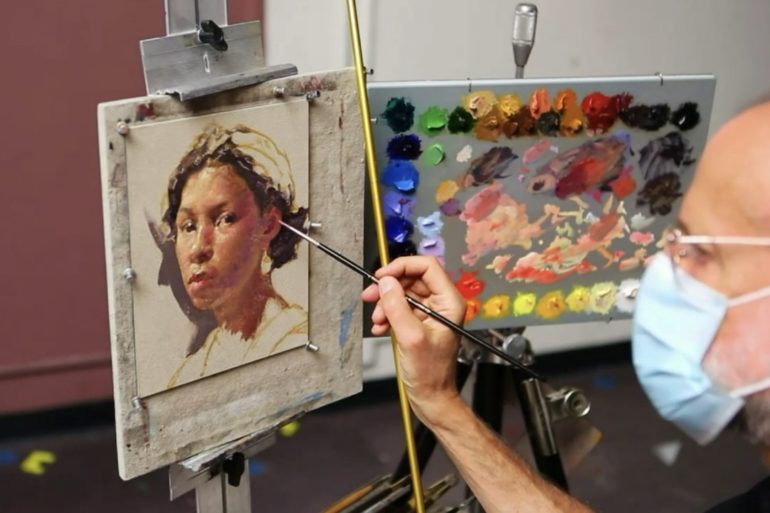
This post is also available in:


The second day of the 22nd Convention of the Portrait Society of America featured artist Anthony John Ryder who opened the convention with a demonstration of painting from life in which he showed his approach to portraiture. Anthony J. Rider was born in New York and currently lives and works in Santa Fe, NM, with his wife, where he opened the Ryder Studio in 2007, where he teaches drawing and painting.
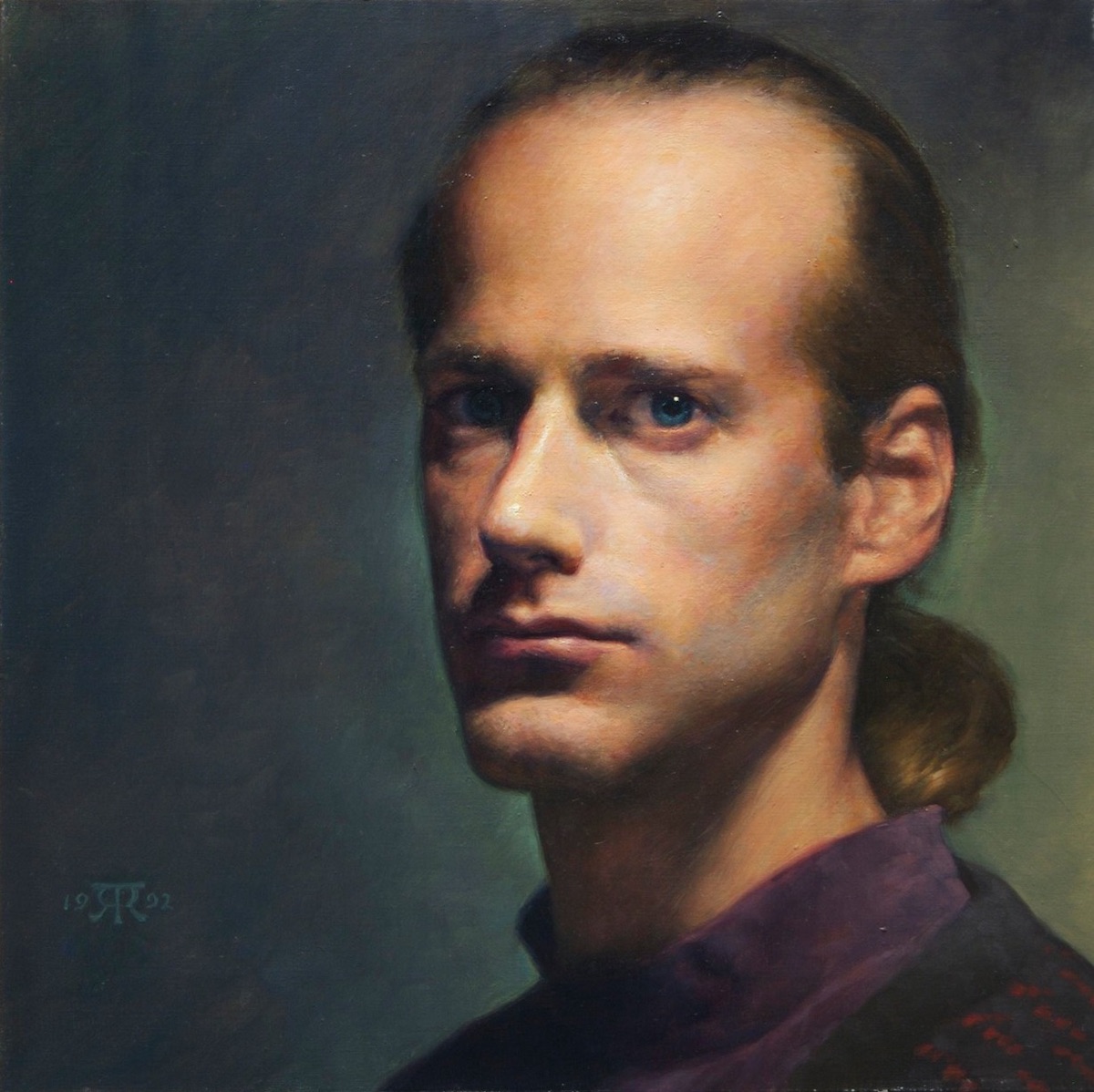
He studied with Ted Seth Jacobs at the New York Art League and then moved to France for several years, where he first studied at La Napoule Art Foundation and then at the École Albert Defois. Upon his return home he was elected substitute at the New York Academy by Mr. Jacobs himself, who wanted him as his successor. After that, in addition to his painting activity, he has been teaching in many schools and institutions not only in America but also in Europe.
In 2007, he moved with his wife to Santa Fe, NM, where he opened the Ryder Studio which offers intensive courses and workshops according to the artist’s personal approach, based on the synthesis of observation and traditional painting theory. Ryder works exclusively from life and in addition to being an excellent painter ranging from still life to landscaping with an eye for portrait and whole figure – with meticulous attention to detail and superb drawing skills – is the author and illustrator of “The Artist’s Complete Guide to Figure Drawing”, written in 1998, produced by Watson-Guptill and much appreciated for those who approach drawing and its rules.
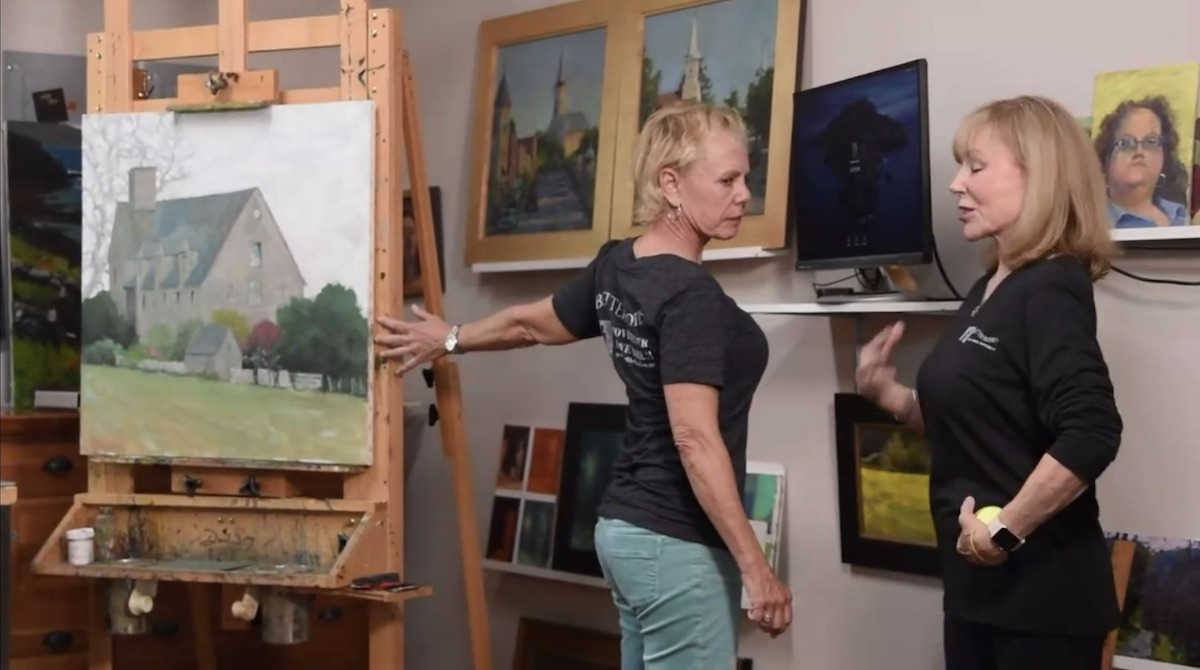
Before starting with the afternoon section, Cynthia Vowell gave some refreshing exercises to do when working for a long time: exercises that help maximize performance during long painting work.
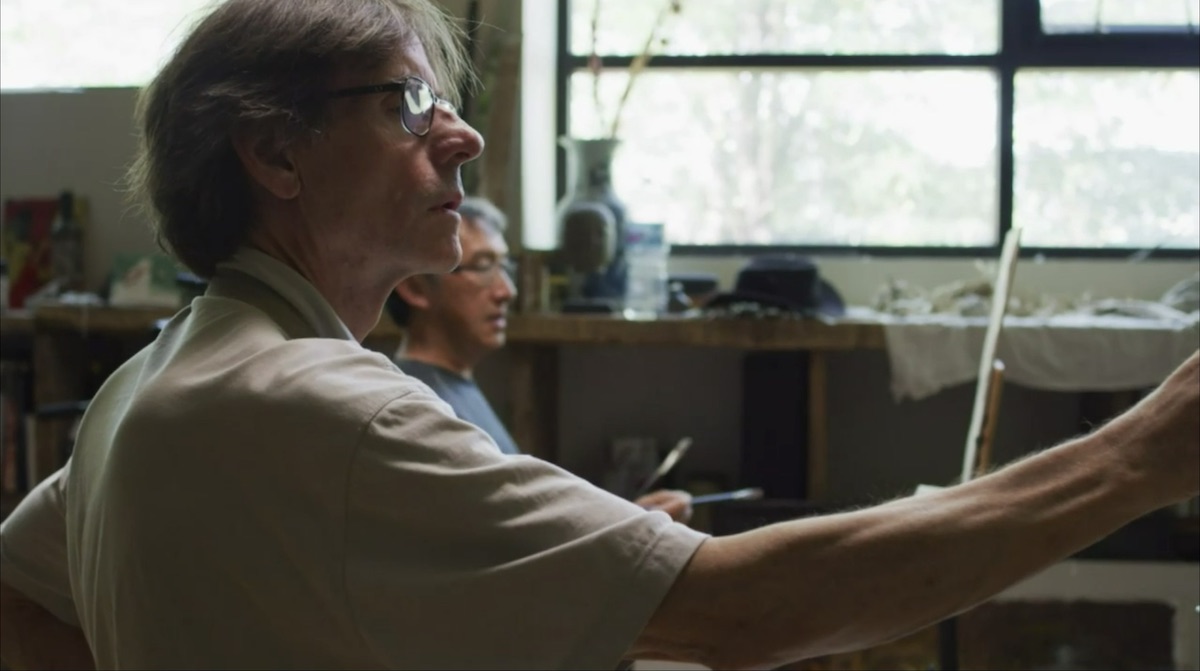
In the afternoon two different demos took place: one saw Anne-Rose Bain and Adrienne Stein as protagonists, while the other one saw two great talents engaged in a demonstration, always from life: one of my favorite artists, Daniel Sprick, living master for skill and generosity, that on Saturday the public will have the honor to know more closely with a space entirely dedicated to him in which he will talk about himself and his painting process, and Quang Ho, an artist we had the pleasure to know better during the days of pre-convention where he showed us his studio. Miami Niche followed Sprick and Ho’s demonstration. The two artists are completely different, not only in character but also in their approach to art: silent Sprick and more loquacious Ho, who claims to have grown up in a chaotic environment that leads him to work with music (John Denver is among his favorite artists).
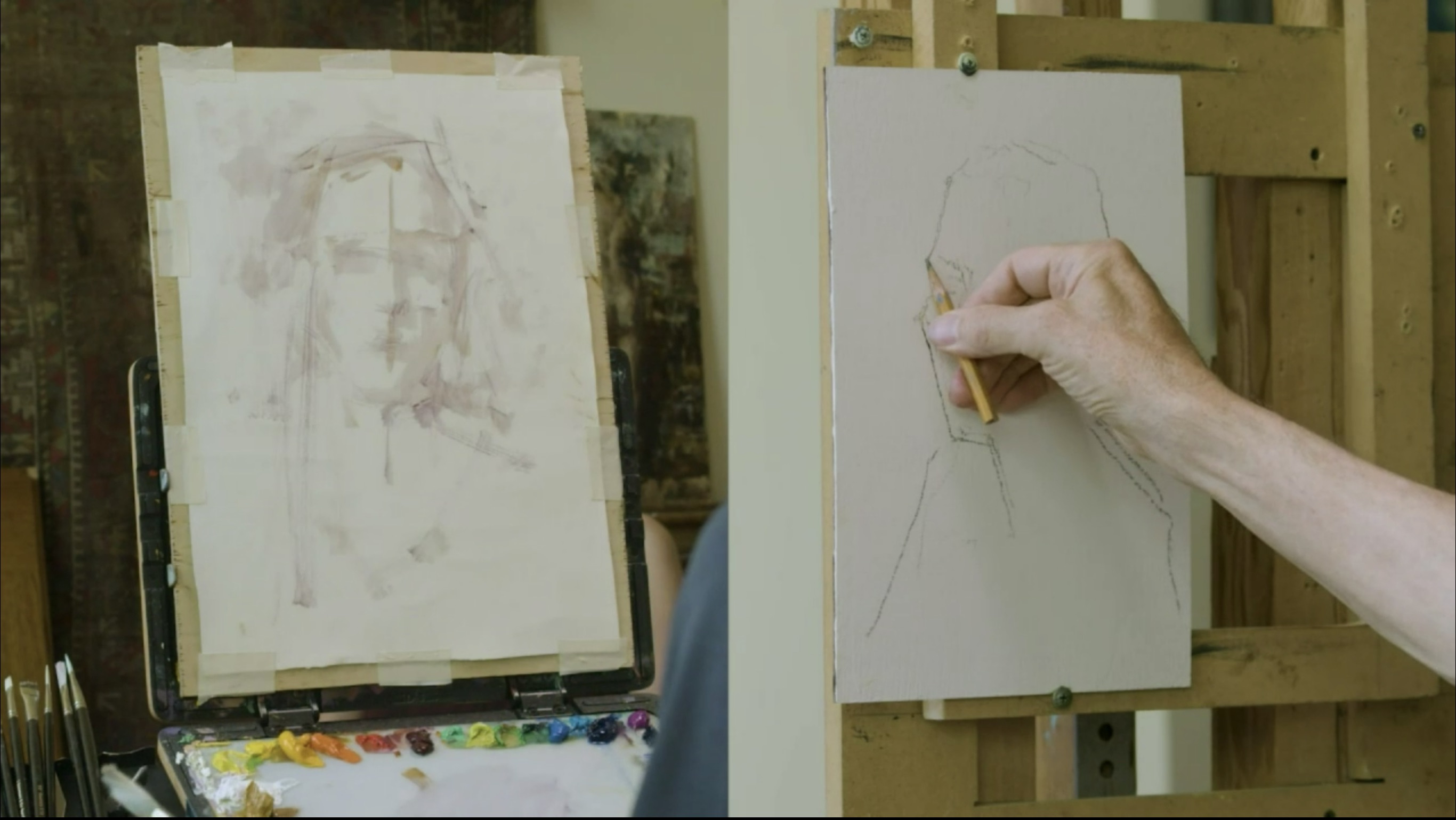
In the live demonstration, on the one hand there is Daniel Sprick’s academic approach to art, who makes a basic pencil sketch taking into account the proportions, on the other hand Quang Ho draws the essential lines of the model with the brush. Brush that he admits to being an even more important tool than color, paradoxically, because he considers it the fundamental means for the success of his work. Among the colors he uses Michael Harding and Sennelier, while Sprick has no particular brand and currently he uses Talens and Rembrandt. If Daniel Sprick presents an extremely limited palette, Quang Ho’s palette is rich and varied and his work is composed of small colored brushstrokes that end up composing the variegated puzzle of the portrait. Sprick’s approach is different. With a sort of rough grisaille quickly spread on the initial sketch track, he starts painting starting from dark tones and then arriving at the semitones that he highlights with the black background, a color that he admits he uses a lot. Two very different characters but with some points of view in common: both support the importance of tonal value on color and generosity in teaching art that should have no secrets. Finally, both agree on giving advice to those who approach art: “Don’t listen anyone: there are one hundred different ways to approach art, find your own having well in mind the importance of drawing which is the basis of the success of a work”.
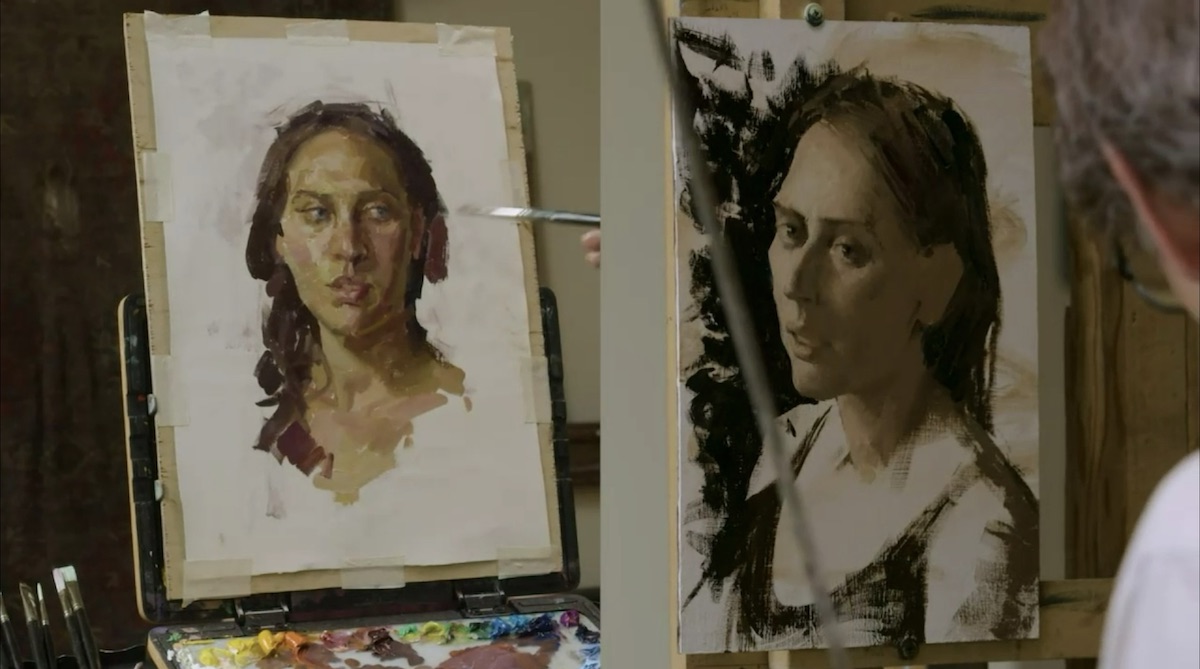
At the end of the demo, Quang Ho advertised the platform for artists created by him in collaboration with a team: the platform is called MFA-Made fo Artist- which is now at the beginning even though it already contains more than ten video lessons and tutorials that the registered user has the opportunity to see again whenever he decides to do so, thus qualifying the teacher who made the video. It is scheduled soon the entrance of ten other teachers in addition to the lessons of art history lectures held by university professors, curators and much more. For more informations, please visit the website: www.mfa.studio.
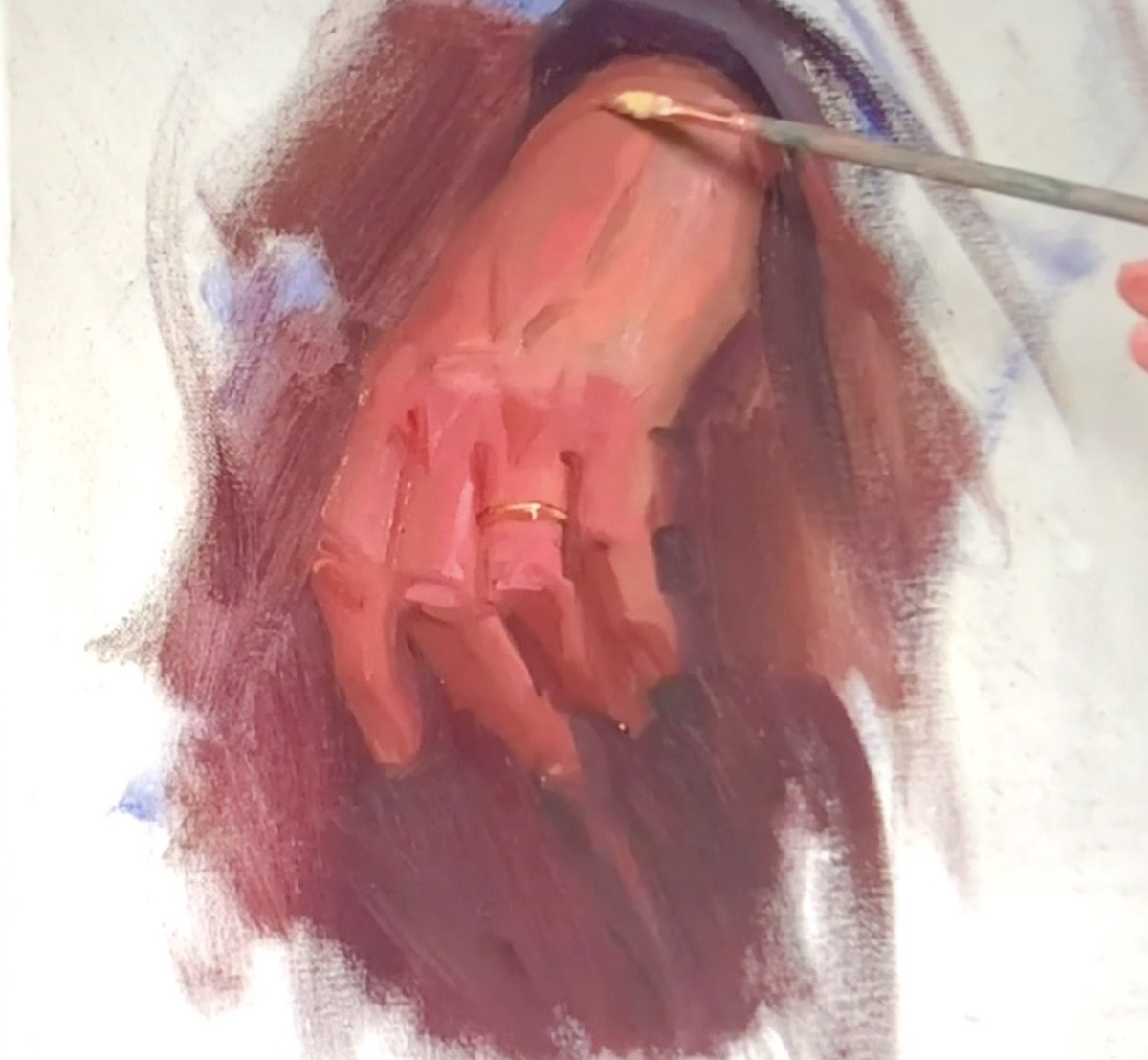
The afternoon continued as planned with the choice of three options: The lesson of Michael Shane Neal “the English Gentlemen” who performed a demonstration of how and what to represent in painting the hand: the gestural importance and psychology that reveals essential traits of the personality of the subject represented; the grace of Rick Casali, successful artist and sculptor, who worked on the different levels of the planes of the head through the use of clay with which he explained the process of constructing the female face, very different from the male face and with concepts applicable indiscriminately to both sculpture and painting; and finally the advice of Chantel Barber, Bebe Bernard, Thomas Caleb Goggans and Liz Lindstrom who gave advice on how to begin and refine a career as a portrait painter.
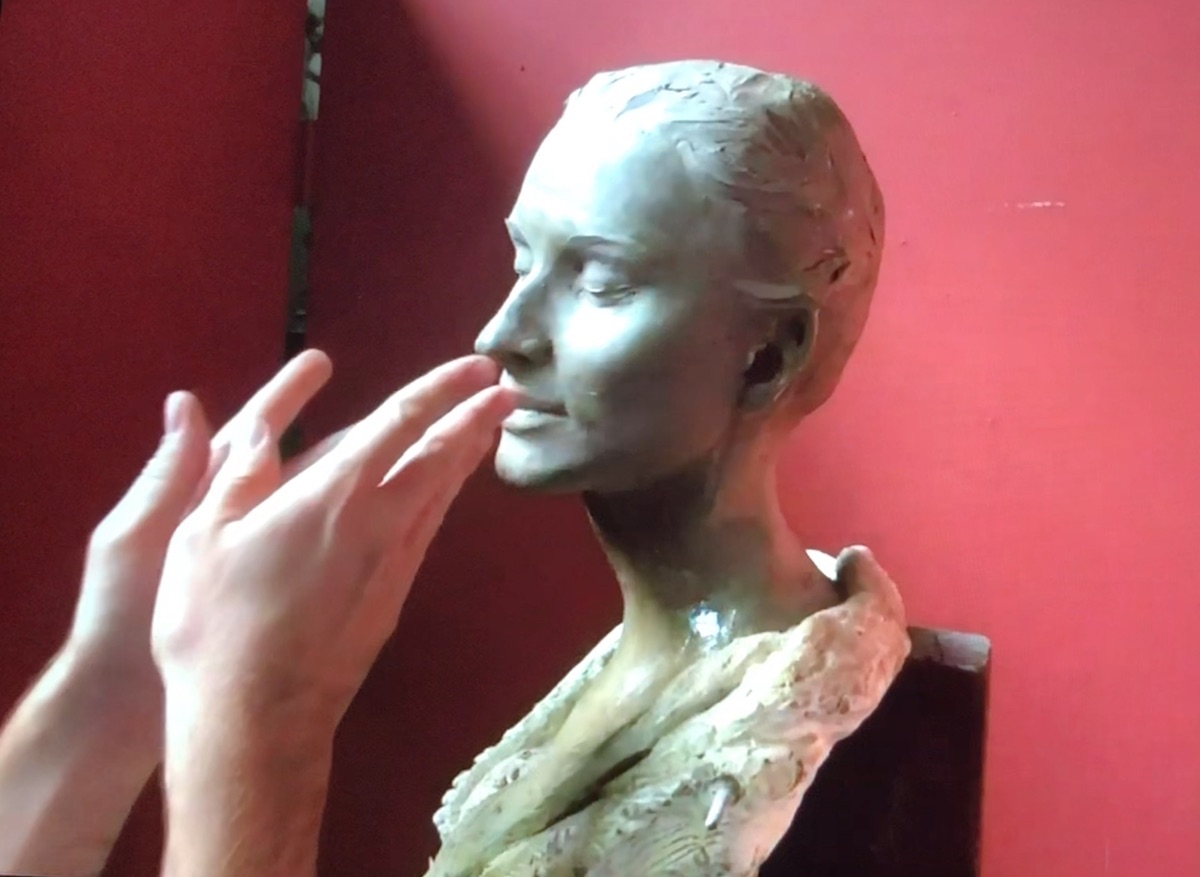
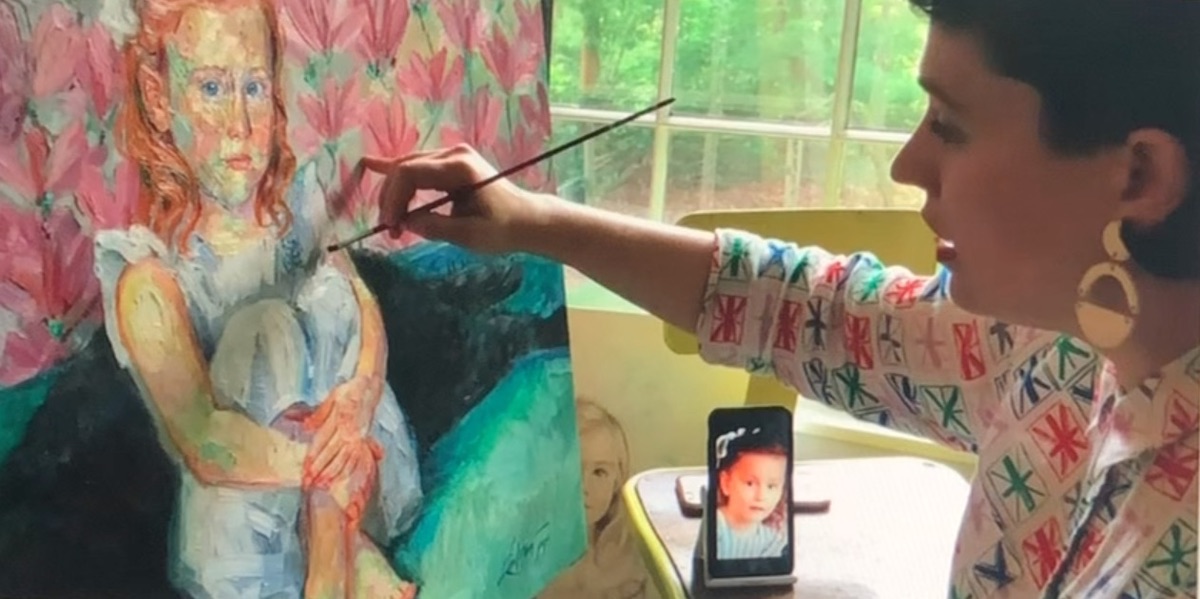
Today is another day and Miami Niche is always in the front row (virtually speaking) continue to follow us on this day as usual full of events.
From the title: Portrait of Maya E Shakur by Anthony J.Ryder
